Ciro Immobile has been impressing with his goal statistics at Lazio during this 2019/20 Serie A season. He has recorded a goal-scoring frequency of 85 minutes, which is topped in Europe only by Bayern Munich’s Robert Lewandowski (one goal per 81 minutes). Immobile, however, has proven to be much more than just a finisher for Lazio.
This tactical analysis breaks down the offensive and defensive contributions of Immobile during this 2019/2020 Serie A campaign. With images, statistics, and heatmaps, this analysis examines the tactics of Immobile and points out why he is a modern, all-around striker, capable of making a difference for reasons that go beyond his high goal-scoring frequency.
Overview
Measuring 185 centimetres and weighing 85 kilos, Immobile is a physically-strong, right-footed striker that enjoys moving across the entire width of the field to attack the defensive line from every position.
His recent success at Lazio has coincided with the point in time when manager Simone Inzaghi took over the team in 2016 and shaped it into a 3-5-2 formation. In this system, Immobile has scored 95 goals in 133 Serie A appearances as one of the two front players. This season, his attacking partner has been Joaquín Correa or Felipe Caicedo.
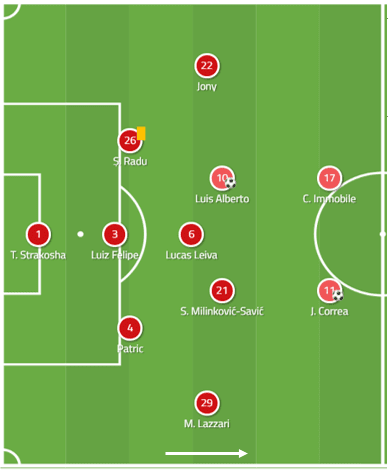
Finishing
In this Serie A season, Immobile has scored 28 goals in 28 appearances, averaging 1.05 goals per 90 minutes and exceeding his 19.54 ratio of expected goals. He is currently the league’s top-scorer, standing five goals away from the second-best scorer, Cristiano Ronaldo.
Immobile’s goal-scoring ratio puts him on pace to break the all-time Serie A record for goals, currently set at 36 by Gonzalo Higuaín during the 2015/16 season at Napoli under Maurizio Sarri. Immobile has 10 games left to score another eight goals to at least equalize the record. It is a possible feat considering the effortlessness with which Lazio creates offensive threats, as proven by the fact that they have the league’s second-best attack with 64 goals.
Immobile keeps displaying what Italian people describe colloquially as “senso del gol” (literally, “sense for goal”), which is the ability to finish in almost every situation, from every position and with any part of the body. Of the non-penalty kick goals this season, he has scored 23 per cent of them with his left foot, 60 per cent with his right and 17 per cent with his head.
His goal against AC Milan last November showcases Immobile’s ability to position himself in the box, attack the space with carefully-timed movements and finish chances mercilessly. As the ball travels to attacking midfielder Luis Alberto, Immobile, who is positioned wide, initiates a sprint forward to attack the space down the right flank. He is indeed comfortable with shifting right and left when making runs in the opponent’s half.

When Immobile recognizes that wing-back Manuel Lazzari is going to attack the same space on the right, he changes the direction of his run and moves toward the middle of the box. Here, he can make the most out of his ability to read the crosses’ trajectory and convert them into goals.
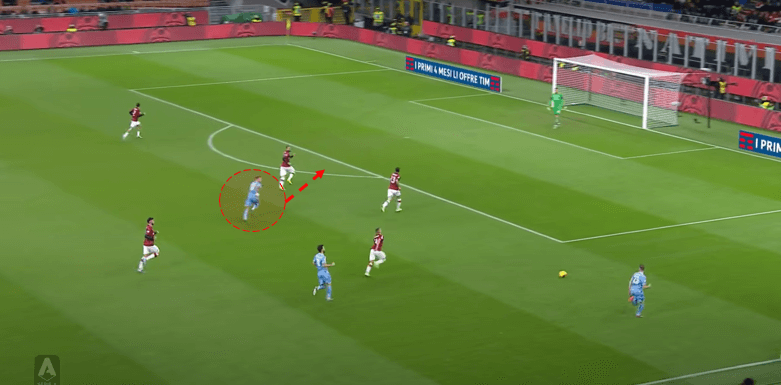
As Luis Alberto plays the ball in the space for Lazzari’s run, Immobile makes a double movement to elude tight marking by AC Milan’s centre-back Léo Duarte. Immobile first initiates a run aimed at attacking the far post, but then, with a sharp change of direction, sprints toward the space in front of Duarte.
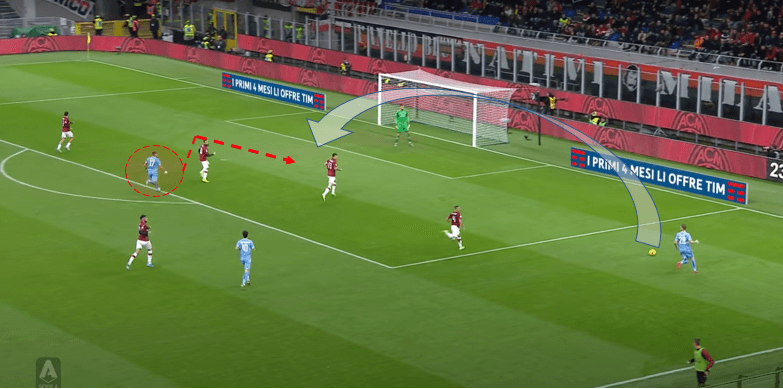
With this movement, he carves out a metre of space that allows him to beat the AC Milan defender to the ball when Lazzari delivers the cross, thus giving Lazio the 1-0 lead with an accurate header. Curiously enough, in that instance, Immobile is able to score despite being the only Lazio player in the box and being outnumbered by a one-to-three ratio against the AC Milan defenders.
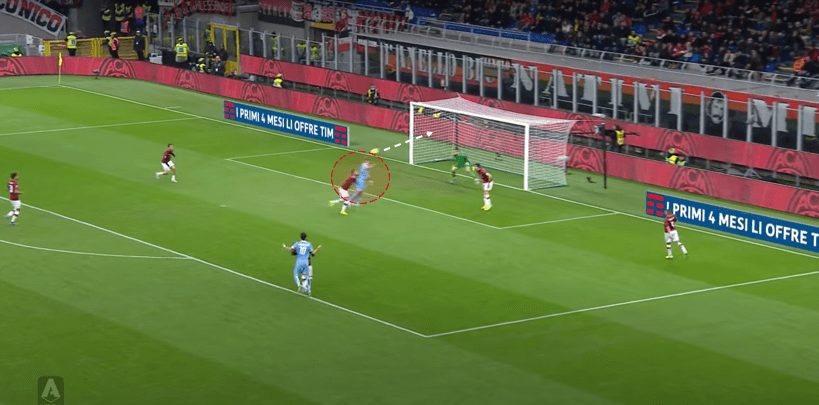
Finally, Immobile’s goal statistics highly benefit from his impeccable penalty-kick conversion rate. He currently ranks third in Serie A for the best penalty-kick conversion rate, which is sitting at 92 per cent. With 11 transformations out of 12 attempts from the spot, Immobile is only behind Juventus’s Cristiano Ronaldo, (8/8) and Lecce’s Marco Mancosu (5/5). It is true, however, that Immobile has taken the most penalty kicks in the league, which makes it more challenging to keep a perfect conversation rate.
Freedom to roam and passing abilities
Although Immobile’s goal ratio is impressively high, his heatmap shows that he does not just hang around the opponent’s penalty box. In fact, he ranks only 21st in Serie A in touches in the penalty box with 5.11 per 90 minutes.
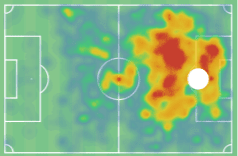
Immobile’s mobility also shows up in his mileage. On average, he covers 10,452 metres per game, ranking first among the Serie A forwards in this category. He does not only move without the ball to offer passing solutions to his teammates, but his explosiveness and balance allow him to successfully dribble up the pitch with the ball at his feet.
The pictures below, taken from Lazio’s 2-0 home win against Bologna, show Immobile’s ability to carry the ball up the pitch. Upon receiving the ball from Luis Alberto in Lazio’s own half (left picture), Immobile drives it forward, completes a one-two combination with left wing-back Jony and serves a through ball in a dangerous position for Lazzari (right picture). In other words, Immobile goes from receiving the ball in Lazio’s defensive third to delivering a shot assist to Lazzari on the other end of the pitch.

This brings up another strength of Immobile, that is his ability to pick out teammates in favourable positions with his passes. His passing skills are above average for a forward, as shown by the fact that he has recorded 7 assists so far in this 2019/20 Serie A season, ranking fifth in this category.
The image below, taken from Lazio’s 3-2 win away at Genoa, is an example of Immobile’s peripheral vision and accurate decision-making. As he receives the ball on the edge of the box, he recognizes that the body position of Genoa’s left-back Domenico Criscito suggests that he is not ready to turn and defend a pass behind his back. Immobile slips a ball on the ground for teammate Lazzari, who in turn serves a dangerous pass across Genoa’s box.
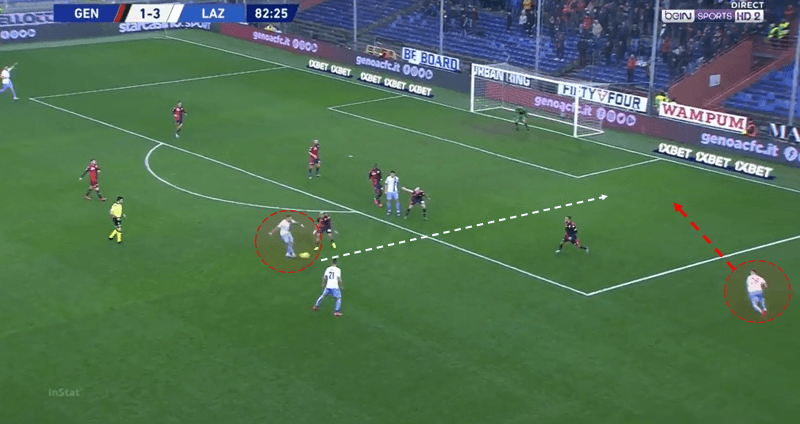
As a result of his mobility and awareness, Immobile creates many offensive threats for Lazio. He currently ranks third in attacking contributions in Serie A with 1.13 per 90 minutes. (This is a metric used to evaluate the contributions of a player in creating expected goals for his team.)
A team player
Thanks to his physical strength, Immobile is a crucial outlet for Lazio to release pressure when the opponent is pressing high. Oftentimes, Immobile is seen dropping deep down the pitch to receive the ball, hold it diligently, and allow his defenders and midfielders to step up their lines.
Immobile also displays a strong desire to participate in the team’s build-up, as shown by the many link-up plays that he performs in a game. In the picture below, we see Immobile showing up very deep to offer a passing solution to Lazzari, as this is looking for a teammate during a throw-in. Immobile controls the ball, shields it from Atalanta’s upcoming pressure and switches it precisely to the other side of the field.

Immobile’s work for the team does not stop here. In fact, he often tracks back defensively when he acknowledges that his teammates are out of position. In the image below, taken from one of the most recent games against Atalanta, Immobile recognizes the danger coming from a potential Atalanta’s counterattack and, consequently, tracks back to cover for his teammates who had committed to an offensive play. Immobile ends up winning that ball back from Atalanta’s forward Duván Zapata.

All these characteristics show that Immobile does not limit himself to scoring goals for Lazio. He also performs critical defensive duties and actively participates in the team’s build-up.
The system, his limitation
Immobile has shown to struggle to play in systems that employ three front players. In the 2014/15 Bundesliga season under Borussia Dortmund’s manager Jürgen Klopp, Immobile featured as a lone striker in a 4-2-3-1 and failed to meet the goal-scoring expectations that had been built around him. That year, he scored only 3 goals in 24 Bundesliga appearances.
At Seville, under manager Unai Emery, he likewise played as a lone striker in a 4-2-3-1 or 4-3-3. Under this system, Immobile’s statistics were one more time below his standards, as he scored 2 goals in eight La Liga games, before finally returning to Serie A halfway through that 2015/16 season.
Immobile needs to be able to roam freely in the opponent’s half, a perk that he fully enjoys when he is partnered up with only one other striker (instead of sitting in the middle of two wingers that occupy the flanks). It is in a two-striker system that Immobile is able to make those lethal, vertical runs that allow him to engage defenders on one-versus-one duels, where his explosiveness and finishing skills make a difference.
Since manager Roberto Mancini took over the Italy national team in May of 2018, Immobile has been employed on top of a 4-3-3 system with two between Lorenzo Insigne, Federico Chiesa, Riccardo Orsolini, Federico Bernardeschi, and Nicolò Zaniolo on the wings. Immobile has scored 3 goals in seven appearances for Mancini’s Italy, a figure that is not too impressive if one considers that 2 of these 3 goals came during Italy’s 9-1 victory over Armenia.
Conclusion
This analysis reveals that Immobile is an unselfish striker that contributes consistently to his team’s offensive and defensive phases. On top of that, he has been recording a high-scoring frequency of one goal per 85 minutes, a figure bettered in Europe only by Robert Lewandowski. What is more, his vision and understanding of the game make him a great passer, as demonstrated by his 7 assists in 28 Serie A games.
Considering Immobile’s statistics and willingness to sacrifice for the team, there are no doubts that managers Simone Inzaghi and Roberto Mancini will continue to start him for Lazio and Italy, respectively. While Immobile’s comprehensive skills set fully expresses itself every season at Lazio, in the future Immobile has to make sure that he carries over all these outstanding qualities when playing as a lone striker in Italy’s 4-3-3. If he manages to do it, he could be the decisive factor in Italy’s chase for its second UEFA European Championship, a trophy that the country has been missing for 52 years.

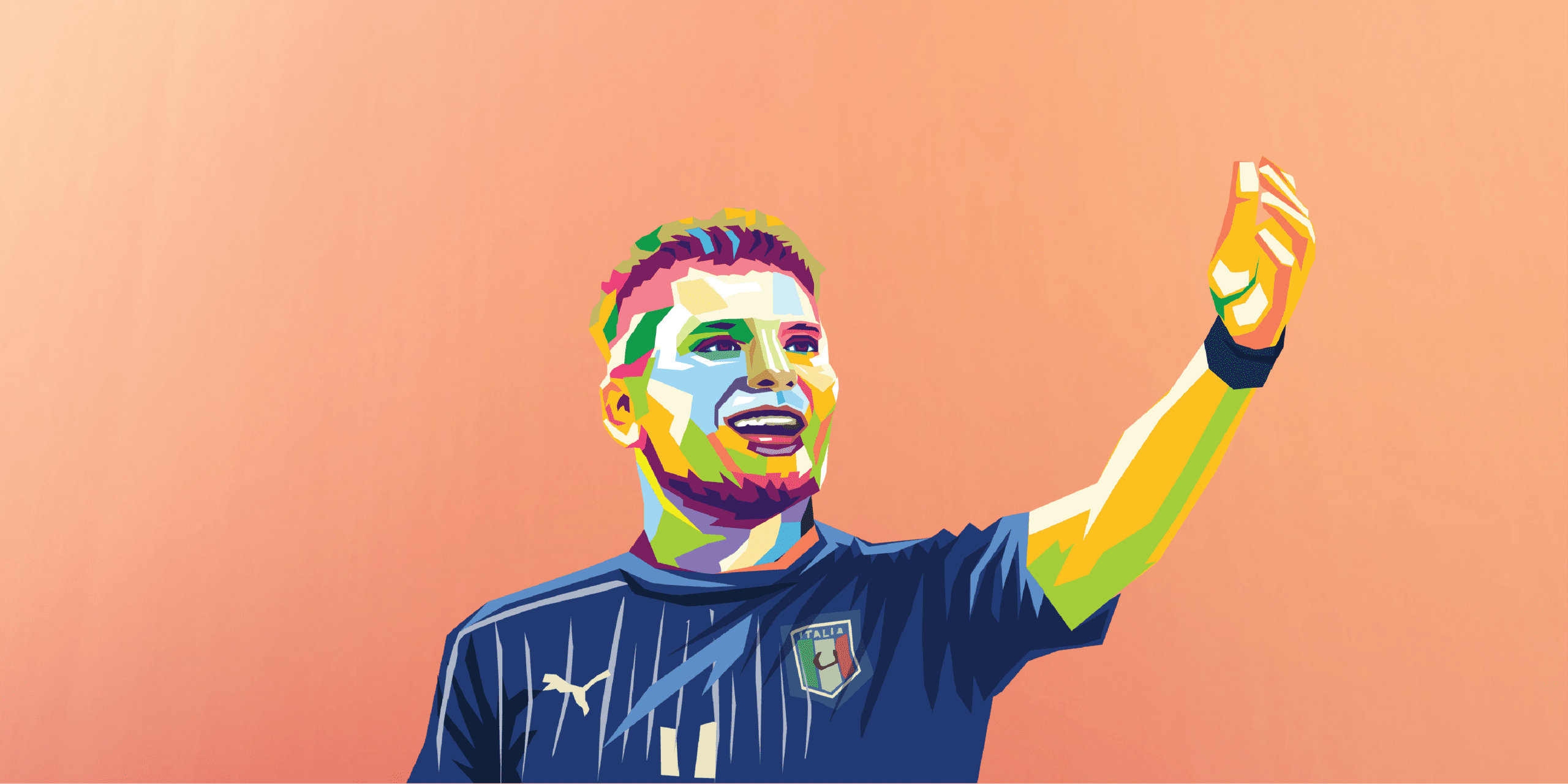



Comments